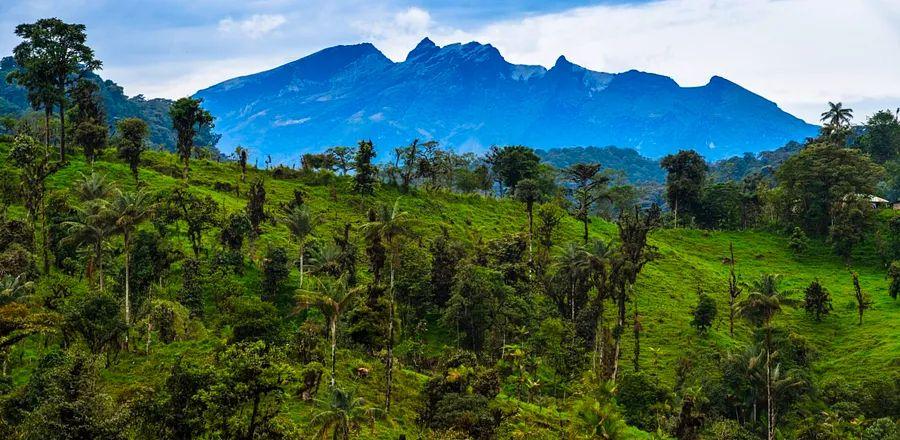Can A.I. Enhance Climate-Friendly Travel?

The lush Choco Cloud Forest in Ecuador is often shrouded in mist, making its rich wildlife occasionally hard to spot. However, it’s the sounds from the diverse species—like the chirping of Mashpi glass frogs and the trilling of bright yellow tanagers—that captivate the Forest Guardians at Mashpi Lodge.
These solar-powered audio recorders were created by Rainforest Connection, a nonprofit based in the U.S. that develops acoustic monitoring systems equipped with A.I. technology. This technology allows for the collection, analysis, and real-time reporting of vast data. For instance, if a gunshot is heard, the Forest Guardians can promptly notify rangers about a potential poaching threat. By gathering ambient sounds, the Guardians can construct a map of the detected wildlife, which is crucial for tracking and preserving biodiversity in the Mashpi Reserve, one of the last remaining sections of the cloud forest.
In recent years, travel and tourism companies have implemented A.I. in various innovative ways: Booking.com’s A.I. Trip Planner; holographic concierges at Beverly Wilshire, a Four Seasons Hotel and Hotel X Toronto; Airbnb’s initiative to use A.I. to identify potentially disruptive guests; and the now-common chatbot assistants. However, the convergence of artificial intelligence and sustainable travel is particularly promising and worth watching.
The travel sector contributes 8 percent of global carbon emissions, according to a 2018 study in Nature Climate Change, highlighting the importance of visibility and accountability in sustainable practices. A 2023 report from the Intergovernmental Panel on Climate Change (IPCC)—a UN body focused on evaluating and addressing climate change impacts—indicated that artificial intelligence can enhance energy management across all sectors, boost energy efficiency, and support low-emission technologies. This has caught the attention of leaders in the travel industry.
According to James McDonald, director of travel transformation at the World Travel & Tourism Council—a global body representing the travel and tourism sector—the most significant transformative application of A.I. in sustainable travel is its ability to minimize aviation emissions. Airlines like Delta Air Lines, American Airlines, and KLM are at the forefront of utilizing this technology.
Recently, Google collaborated with American Airlines on a project named Project Contrails. This initiative focuses on harnessing artificial intelligence to mitigate contrails—the white, wispy trails of heat and water vapor that aircraft sometimes leave behind. These contrails lead to non-CO2 emissions, contributing to an estimated 35 percent of the aviation sector's role in global warming, as stated in a 2021 study published in Atmospheric Environment. Through A.I.-driven predictions, American Airlines pilots managed to select flight paths that reduced contrails by 54 percent.
Karen Panetta, a computer engineer specializing in A.I. and machine learning at Tufts University, states, “A.I. analyzes current weather patterns, air traffic, and historical seasonal traveler data. This influx of dynamic information complements human-sourced data, enabling us to adopt more fuel-efficient routes while hopefully ensuring passengers arrive at their destinations comfortably and with fewer delays.”
Airlines like KLM are implementing a machine learning model in their operations to address another significant environmental issue: food waste. Utilizing its A.I. model, TRAYS, KLM can predict how many passengers who booked a flight will actually board, allowing them to adjust catering orders and achieve a 63 percent reduction in food waste. Similarly, hotel chains are leveraging A.I. to minimize waste. Hilton has partnered with Winnow, which has created an A.I.-enabled camera and scale system to monitor and quantify food waste, using this data to refine production, inventory, and menu planning.
The potential applications of A.I. for enhancing the sustainability of hotel and transportation operations are extensive, including reducing taxi wait times at crowded ports and airports, as well as streamlining sustainability reporting processes. A.I. could even aid in managing overtourism at cultural and natural heritage sites. Panetta explains, “By utilizing A.I.-generated weather forecasts, current events, and visitor data to determine the most sustainable times to visit a location, we can effectively lower energy consumption and environmental impact.”
Though travelers may not notice these advancements directly, they significantly influence operations behind the scenes, where some argue A.I. truly shines. A prevalent concern for both travelers and tourism companies is that A.I. may undermine the essence of travel—human connections—and potentially displace the workers central to the industry.
Peter Pilarski, founder of Tourism A.I. Network, a Canadian firm that assists travel businesses in implementing A.I. strategies, states, “While we worry about job losses due to A.I., the tourism sector is facing severe labor shortages. Automating desk-bound tasks would allow us to dedicate more time to delivering authentic visitor experiences—those genuine human interactions that A.I. will never replicate.”
Despite advancements in accuracy and rapid technological progress, we have yet to see general A.I.—the type that matches or exceeds human intelligence. This makes human oversight crucial, potentially creating new job opportunities. “At this point, you can’t simply let A.I. operate independently,” Panetta explains. “Experts are needed to understand the origins of the data and the methods of its analysis.”
A.I. can enhance sustainability not just for the travel industry but also for travelers themselves, guiding them towards more eco-friendly activities and accommodations. A 2022 report by Booking.com found that 29 percent of surveyed travelers were unsure how to locate sustainable choices. A.I. algorithms that generate personalized trip suggestions based on environmental considerations could aid travelers in making informed plans. For example, Google’s latest updates to Maps and Search now include eco-conscious alternatives, such as rail routes instead of flights and locations for EV charging stations.
Of course, A.I. is still far from flawless. For instance, Air Canada was ordered to compensate a passenger earlier this February when a chatbot erroneously provided information regarding a bereavement fare. This incident was a result of a hallucination, a phenomenon where A.I. fabricates information due to insufficient or biased training data.
Apart from these challenges, a significant issue that A.I. must confront to be a practical sustainability solution is its own environmental footprint. Data centers require vast amounts of water for cooling and produce considerable CO2 emissions due to their electricity consumption. The International Energy Agency's 2024 report indicated that electricity usage from data centers and A.I. could potentially double by 2026 compared to 2022 levels. Moreover, Google reported a nearly 50 percent increase in greenhouse gas emissions in 2023 compared to 2019, largely due to A.I. data centers, as highlighted in its 2024 environmental report.
Panetta notes that to mitigate the resource drain of A.I., significant changes are necessary, such as transitioning data centers to renewable energy sources and creating more energy-efficient algorithms and training materials for A.I. If these steps aren’t taken, any sustainability benefits that the technology might offer will be undermined. Nevertheless, experts remain optimistic that artificial intelligence will eventually evolve into a more environmentally friendly tool, contributing positively to sustainable travel.

1

2

3

4

5
Evaluation :
5/5